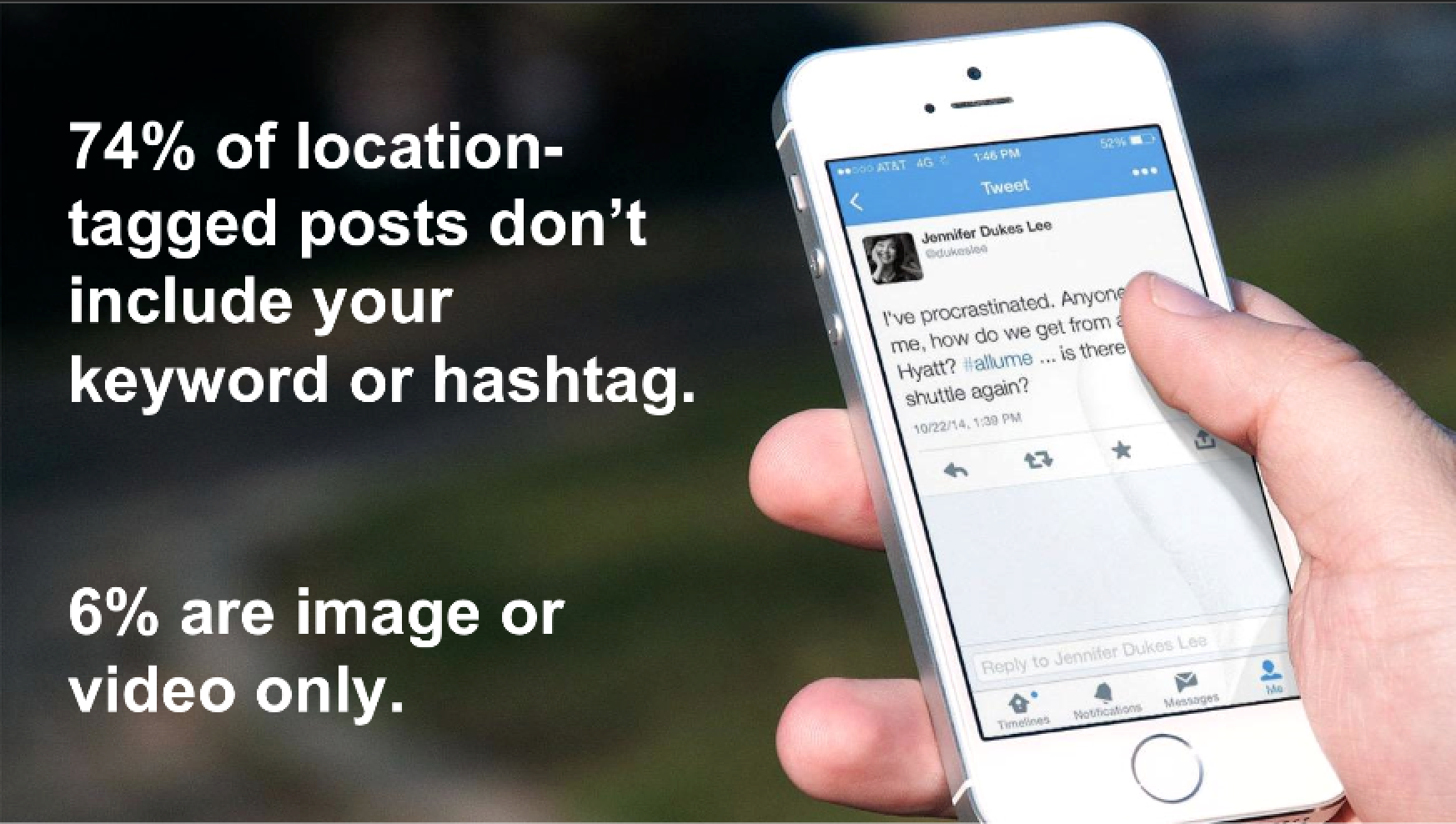You know the smell of your home – the way traces of your favorite homemade meal waft throughout the house, the stench of dog hair remnants stuck to your couch – that special scent that’s so familiar, even if you can’t quite put it into words?
All of the senses you experience in your home add up to a place that you understand better than anywhere else in the world. When something feels different, you recognize it and immediately know how to react.
How well do you know the places your customers go? What if we could understand all of those places in the same way that we experience our childhood home? What if we could use that intelligence to know how to react to people, when to reach out, and when to target them?
It’s a high mark to aim for, but we now have the data and analytics to get closer now than ever before.
Finding the signal in a haystack
Finding the social signals that matter to us and being able to react the right way in real time is a massive challenge for the modern marketer. There are tons of signals and they happen all over the world.
Today you can use location-based tools to separate the signals coming in from one another, and then use context to assess them. If you draw a geofence around a location, you can cut through all the clutter to get to the conversation happening there.
Consider this:
- 74% of location-based posts don’t include your keyword or hashtag
- 6% of location-based posts are image or video only
So if you’re using only keywords and hashtags, you’re missing out on vast amounts of data that you can get by using location-based tagging.
Remember the 4 P’s of the Marketing Mix (Product, Price, Promotion, Place)? Don’t ignore place. Using a geofence, you can create a perimeter around any location in the world and get to know it like your childhood home, he adds.
The NCAA uses location data at the Final Four, where some 60% of posts don’t have the hashtags you’d expect, but they are still able to get data on what people were talking about. The NCAA has optimized the fans’ journey by letting them know about events, helping guide them around the city and giving recommendations for restaurants.
10 Ways to Separate the Social Signal from the Noise
- Start with location: Understand the locations that matter to your customers, and create geofences around them.
- Get a feel for the place: Consider what the keywords and hashtags are that people use that are different from when they’re talking about it, but not there. Who are the top influencers?Is the sentiment positive or negative?
- Go hyperlocal: Understand what people are talking about in the specific places that you’re talking about. How’s the parking lot different from my store, versus my competitor’s store?
- Optimize the customer experience and change strategy over time using place-based data: Know what bathroom is the gross one that people are tweeting about. Manage celebrity visits and help them tweet and post to uplift the event
- Complement your efforts with traditional tools: This isn’t an all-in-one solution. Location data ranges from 1% to 18% depending on the platform. You need both traditional and innovative tools.
- Don’t be creepy: There’s a fine line between cool and creepy. So use your data responsibly
- A picture is worth a thousand words: You can find posts that have no text at all using location data. This can tell you all kinds of things, like whether people like or hate your brand.
- So is a video: it’s a great source of data.
- Put location signals to work: you’ll get a huge number of new analytics – from social influencers to the keywords and hashtags people are using. Dive in.
- Test! We’re in the business of quick iterations and we need to figure out what things work and what things don’t.
Some 56% of posts at Element Three’s 2014 marketing conference didn’t use the conference hashtag.
The top ten influencers were responsible for 60% of the conversation. People who weren’t there were looking to those influencers to know whether they were enjoying the conference. This shows the power of location to help give context to what’s happening.
The future of marketing is context. So, know the context surrounding your consumers. Figure out what they are saying by knowing where they are. Once you master this, develop a strategy to capitalize on that knowledge in a way that best suits your business goals.






